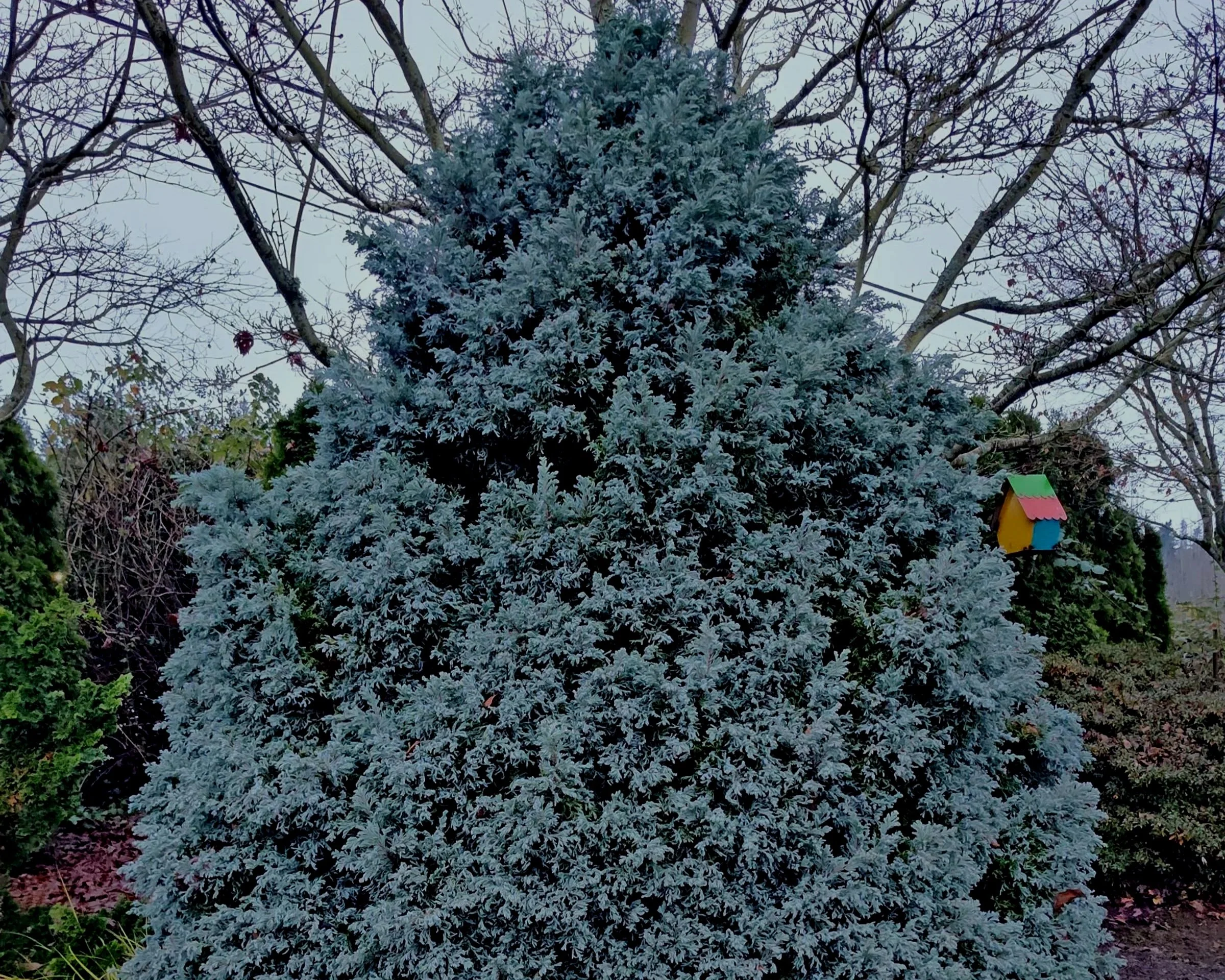As much as I hate to admit it, it is time to jettison the summer color and start thinking about what will look good in the garden all winter. As the perennials melt down, the annuals die, and the deciduous trees and shrubs shed their foliage, the primary group of plants that can give us dependable winter color are the needle-leafed evergreens - which botanically speaking we call conifers. They become the framework of our borders and beds and help us to remember how the spaces are articulated in our gardens.
Garden centers do an amazing job featuring conifers this time of year. You can find dozens of different genera featured front and center in displays to view wonderful examples of how to combine them with other winter interest plants. Many of them have taken on winter colors of plum and bronze instead of their summertime blues and greens. You might be surprised at the contrast and drama you can generate with conifers just from the variety of foliage colors and growth habits that are available. And don’t forget to look for miniature varieties that only grow an inch or less a year, which makes them well suited for containers, rockeries or miniature gardens.
I will write more about the incredible variety of conifers available to northwest gardeners in the next couple of weeks, but for now I want to focus on three pines that caught my interest recently.
‘Chief Joseph’ Shore Pine — This is actually a mutation of our native shore pine that grows along the coast but is equally happy farther inland, as long as it gets good drainage. In many ways, the ‘Chief’ is the holy grail of pine specimens. During the growing season it is completely underwhelming, but as soon as the days shorten and the nights cool off, ‘Chief Joseph’ does an amazing metamorphosis with its needles turning a bright golden yellow and remains a beacon in the garden all winter long. The ‘Chief’ is a slow grower that is best located in the background, somewhere where it can be overlooked in the summer but will light up the joint in the winter when we really need the illumination. Don’t be surprised by the price tag - these beauties are hard to propagate and hence are expensive, but well worth the investment.
‘Louie’ White Pine — This is a lovely, finely textured and graceful sport of Pinus strobus or eastern white pine. Like all white pines, ‘Louie’s’ needles are 3 to 4 inches long and come in bundles (called fascicles) of five needles. While most white pines have bluish-green needles, ‘Louie’s’ are bright golden and keep their color throughout the year. ‘Louie’ will grow to 20 feet tall and has a pyramidal form so it lends itself well to becoming a focal point in the garden. That being said, if your garden is small then I would recommend keeping it in the background so there is room for more jewels in front of it.
‘Carsten’s Wintergold’ Mugo Pine — This is a dwarf pine that only grows to about 2 feet tall and several feet wide. In the summer it is a cute little bun of bright green needles, but as the winter approaches it does its chameleon thing like ‘Chief Joseph’ and turns a rich gold. The colder the winter, the darker the foliage becomes. ‘Wintergold’ looks good in the front of the border or nestled near some rocks. Like all pines, bright sun and good drainage are the secret to success.
Check out all the conifer displays at the nursery this month and keep on gardening!



